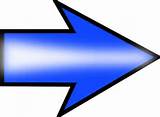Our
first major insight in Perth came from back-issues of
local newspapers filed in the Battye Library. An issue
published the day after Lawrence arrived on the Orsova
revealed that Lawrence had been interviewed on the wharf
by a Mrs Zabel, a "stringer" for a local newspaper,
who also ran the Booklovers Library in Perth.
From her familiarity with contemporary literature, she
would have known who Lawrence was - at that time a little-known,
rather avant-guard, English author. She would have been
keen to learn what his literary intentions were in Western
Australia.
He told her (so she reported) that he planned to stay
some time, and wanted to visit the apple-growing region
south of Perth. She invited him to come to the Booklovers
Library, which he later did, holding court there with
the local literati. (It is indicative, considering what
later happened in Sydney, that in Perth Lawrence made
no effort to avoid contact with the local literary community.)
But Lawrence did not tarry. After he got his mail, several
hours later, from Mrs Jenkins, he booked on the next available
boat leaving for Sydney - no doubt because he had opened
a letter from Hum, confirming or reiterating an offer
of help when he arrived in Sydney.
Sandra, meanwhile, was trying to track down the descendants
of the people who may have met Lawrence in Perth. It was
in this pursuit that she became aware of what a small,
interconnected place Perth is today...as small and interconnected,
perhaps, as Sydney was in 1922, when Lawrence stepped
off the Malwa's gangplank.
The manuscript librarian at the Battye had a relative,
Mary Brazier, who was particularly helpful.
It turned out that her maiden name was Burt, one of Western
Australia's most prominent families. (Mrs Jenkins was
also related to the Burts.) Mrs Brazier arranged for Sandra
to contact her cousin, Sir Francis Burt (a former Chief
Justice and Lieutenant-Governor of WA). Among other things,
he told Sandra that Mollie Skinner's family - the Leakes
- were also related to the Burts.
According to Mary Brazier (who lived in Leake Road, Peppermint
Grove, Perth's most prestigious suburb) Mollie Skinner's
"Leithdale" had been a popular place for the
elite of Perth to stay in the years after WW1.
In her autobiography, The Fifth Sparrow [Sydney
University Press 1972], Mollie recounted having placed
the Lawrences at table with a young couple, the Eustace
Cohens.
Sandra was perhaps not surprised to learn that the young
Mrs Cohen was also a Brazier. She and her architect-husband
were honeymooning at "Leithdale" when Lawrence
was there. (Actually she was also convalescing there,
having recently fallen down a lift-well and broken her
leg.)
Mollie had thought that Maudie was "intellectual",
and thus might prove an interesting table companion for
Lawrence.
Sandra's major discovery in Perth, however, was linking
the newly-married Mrs Cohen, nee Maudie Brazier, with
an important aspect of the text of Kangaroo - indeed,
a very important aspect, and one that was to play a major
role in the Quest for Cooley.
A primary goal of the research was to try to identify
the "real people" Lawrence was portraying in
the text of Kangaroo. I had a good idea who Jack
Callcott and Benjamin Cooley were - Scott and Rosenthal
- but on whom might the other characters have been based?
It seemed highly likely that they were modelled on actual
people Lawrence had encountered in Australia.
Three primary characters cried out for provenance: Victoria
Callcott (Jack Callcott's young wife); Jack's close friend
William James "Jaz" Trewhella; and "Willie"
Struthers, the union leader and main political rival to
Cooley.
The text of Kangaroo contained a great deal of
biographical information about all three. But at that
stage of the research there were no obvious candidates
for whom the first two, in particular, could have been
based on.
Victoria Callcott was an especial puzzle.
Jack Scott, whose life story I was now quite familiar
with, was "a ladies' man" (attractive to women),
but in 1922 he was between wives. He had separated from
his first wife (a Canadian nurse) and was courting his
second (the mother of the two men I had met in 1976).
